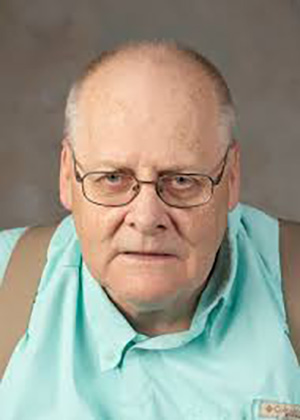OPINION —
I wonder how department heads at Auburn University or the University of Alabama would respond to an online professor who never reveals his own photo on the Zoom screen. How about the students? Their photos are expected to be posted. But when a professor such as Charlie in “The Whale” weighs more than four students combined — that is, 600 pounds — he continues to claim his webcam is broken to save embarrassment.
An English teacher on the web, Charlie spends all his time inside his home and even hides his face from his local pizza delivery man. Brendan Fraser is deservedly nominated for an Oscar, after a period of slippage in his career. My focus today is actors playing roles outside their race, ethnicity and size.
Example: Fraser’s acting is remarkable as he plays a man three times his (Fraser’s) own weight who endangers his health with every pizza and chocolate bar.
A controversy has arisen as some critics say the movie makes fun of morbidly obese people. Time Magazine stated, “Some critics believe it perpetuates tired tropes of fat people as suffering, chronically depressed and binge eating.”
Others lambast the director, Darren Aronofsky, for using a prosthetic suit to seemingly add pounds, instead of hiring an obese actor. National Public Radio reported that this criticism extends to detractors who call the film’s premise “inherently dehumanizing.”
Although in Hollywood diversity has been promoted for years, the reality is that white actors are getting roles best suited to a diverse roster. An astounding 75% of speaking roles go to white men or women, according to the Huffington Post. Against expectations, most roles of characters of color are awarded to whites. This comes from “25 Times white actors played people of color and no one really gave a…” on Voices.com.
For instance, Sir Laurence Olivier starred in “Othello,” the filmed version of the Shakespeare tragedy. Othello is a general in the Venetian army and also a Christian Moor, depicted as having a dark complexion. Olivier was cast, although he has no African or Arab roots, so he wore full-on blackface in the film. That means he painted his skin several shades darker to play Othello.
Another example is when John Wayne played Genghis Khan in “The Conquerer” (1956). The emperor was Mongol, born near the border of what now is Mongolia and Siberia. Wayne had absolutely no Asian ancestry. He was of mixed-European descent. Western movie legend Wayne took a chance with this role; no critic reviews are listed on Rotten Tomatoes. Maybe he is lucky that there are not!
The film “The King and I” (1956) is a musical set in Siam (Thailand) that features a British widow who is a live-in governess to the King of Siam’s children. That character is Southeast Asian. Yul Brynner was mainly of Russian descent. His birth name: Yuliy Borisovich Briner. He changed his name when he became an actor. It worked: He won the Oscar for best actor for this movie.
I think a balance can be achieved with these roles that are written for a certain race or ethnicity. Critics are right in saying that Wayne, Olivier, etc., were automatically chosen for roles they should not have been. That is because they were A-list actors — that is, “money makers.” But “token” actors should be hired only if they are ready to play their part with gusto.
For an online professor who hides his or her face in classes, a solution is to have students offer to fix the webcam. They can say, “We show who we are, why can’t you?” Or the teacher can be approached by a fellow professor to look into the problem. It will be difficult, as the problem is not the webcam but that Charlie is blocking his identity photo because of his off-putting 600 pounds.
This column is about actors who play characters of another race, ethnicity and size. It is not a movie review, per se; I recommend that you see it, though.
Near the movie’s end, Charlie shouts to his cynical teenage daughter Ellie: “I need to know that I did one thing right with my life.” What a wrenching scene!
I don’t know any professors, adjunct or tenured, at Auburn University or Auburn-Montgomery, who refuse to place their picture on the webcam. For Charlie, teaching courses online was a good thing he did for people wanting to learn English. If he showed his picture, warts and weight and all, maybe he would die content that he was not hiding anymore from curious students.
Greg Markley moved to Lee County in 1996. He has a master’s in education from AUM and a master’s in history from Auburn University. He taught politics as an adjunct in Georgia and Alabama. An award-winning writer in the Army and civilian life, he has contributed to The Observer since 2011. He writes on politics, education and books. gm.markley@charter.net.

